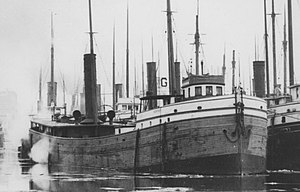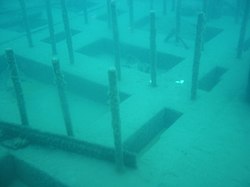
USS Essex was an Enterprise-class wooden-hulled armed naval steam sloop of war. She was built between 1874 and 1876 by Donald McKay at the Kitter Naval Yard of East Boston, Massachusetts. She was commissioned on 3 October 1876 by the United States Navy. On 23 December 1930 Essex was sold for scrap, and on 14 October 1931 she was taken to the beach just outside Duluth Harbor where they set fire to her; she eventually burned to the waterline. On 14 April 1994 the remains of Essex were listed on the National Register of Historic Places. Her partially surviving hulk is significant because she is the only known remnant of the work of master shipbuilder McKay.
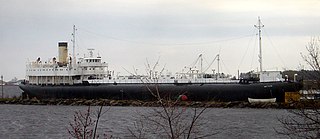
SSMeteor is the sole surviving ship of the unconventional "whaleback" design. The design, created by Scottish captain Alexander McDougall, enabled her to carry a maximum amount of cargo with a minimum of draft. Meteor was built in 1896 in Superior, Wisconsin, United States, and, with a number of modifications, sailed until 1969. She is now a museum ship in the city of her construction.
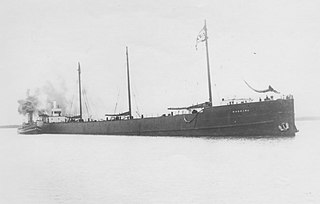
Madeira was a schooner barge that sank off the coast of Minnesota in Lake Superior on November 28, 1905. A schooner barge is a type of ship that functions like a barge, in that it is towed by a steamship, but also has sails like a schooner. This type of ship evolved from wooden sailing ships that were cut down into barges and towed behind wooden steamships, a practice which originated in the late 1880s in coastal areas. This design was commonly used in the Great Lakes for transporting grain, iron ore, and other products.
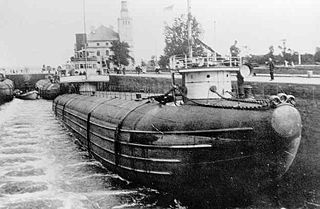
The Thomas Wilson was a whaleback freighter built in 1892 and used to haul bulk freight on the Great Lakes. The ship sank in Lake Superior just outside the harbor of Duluth, Minnesota, United States, on 7 June 1902, after a collision with the George Hadley. The wreck of the Thomas Wilson is one of the best remaining examples of a whaleback steamer, and it is also significant for the changes made in operating procedures at the Duluth harbor. The remains of the ship were listed on the National Register of Historic Places in 1992.
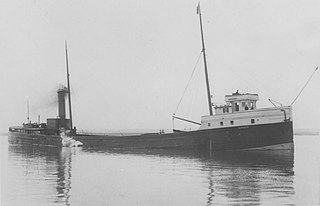
The SS Marquette was a wooden-hulled, American Great Lakes freighter built in 1881, that sank on Lake Superior, five miles east of Michigan Island, Ashland County, Wisconsin, Apostle Islands, United States on October 15, 1903. On the day of February 13, 2008 the remains of the Marquette were listed on the National Register of Historic Places.
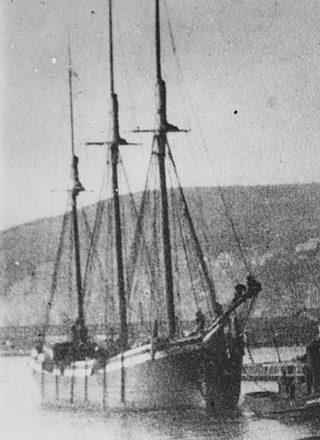
Samuel P. Ely is a shipwreck in Two Harbors, Minnesota listed on the National Register of Historic Places. It was a schooner that sailed the Great Lakes carrying iron ore, coal, and other bulk freight. It was built in 1869 and was a fairly typical example of the 200-foot schooner built in the 1870s, though she was reinforced for the demands of carrying iron ore.

SS Comet was a steamship that operated on the Great Lakes. Comet was built in 1857 as a wooden-hulled propeller-driven cargo vessel that was soon adapted to carry passengers. It suffered a series of maritime accidents prior to its final sinking in 1875 causing the loss of ten lives. It became known as the only treasure ship of Lake Superior because she carried 70 tons of Montana silver ore when it sank. The first attempts to salvage its cargo in 1876 and 1938 were unsuccessful. Comet was finally salvaged in the 1980s when the Great Lakes Shipwreck Historical Society illegally removed artifacts from the wreck. The artifacts are now the property of the State of Michigan and are on display as a loan to the Great Lakes Shipwreck Museum. The fate of her silver ore cargo is unknown. Comet's wreck is now protected by the Whitefish Point Underwater Preserve as part of an underwater museum.

America was a packet boat transporting passengers, mail, and packages between settlements along the North Shore of Lake Superior, an inland sea in central North America. Built in 1898, America sank in Washington Harbor off the shore of Isle Royale in 1928, where the hull still remains. The wreck was placed on the National Register of Historic Places in 1984.

The Cumberland was a wooden-hulled side paddlewheeler built in 1871; it was wrecked off the shore of Isle Royale in Lake Superior in 1877 and the remains are still on the lake bottom. The wreck was placed on the National Register of Historic Places in 1984.

The Henry Chisholm was a wooden freighter that sank off the shore of Isle Royale in Lake Superior in 1898 and the remains are still on the lake bottom. The wreck was placed on the National Register of Historic Places in 1984.

SS Mataafa was an American steamship that had a lengthy career on the Great Lakes of North America, first as a bulk carrier and later as a car carrier. She was wrecked in 1905 in Lake Superior just outside the harbor at Duluth, Minnesota, during a storm that was named after her. She was built as SS Pennsylvania in 1899, and renamed Mataafa when she was purchased in the same year by the Minnesota Steamship Company. After her 1905 wreck, she was raised and repaired, and served for another sixty years before being scrapped.

The SS Benjamin Noble was a lake freighter that operated on the Great Lakes. Built in 1909 by the Detroit Shipbuilding Company, she was 239 feet (73 m) in length and had a beam of 40 feet (12 m). She was built as a "canaller," a vessel designed for use in what were then the dimensions of the Welland Canal, but was converted by her owners for services in the open Great Lakes. Heavily laden and top-heavy with a cargo of railroad rails, she sank in a Lake Superior storm near Knife River, Minnesota, in April 1914 with the loss of all hands.

SS Robert Wallace was a wooden-hulled American bulk freighter that served on the Great Lakes of North America from her construction in 1882 to her sinking in 1902 on Lake Superior near the town of Palmers, St. Louis County, Minnesota, United States. On November 17, 1902 shortly after leaving Superior, Wisconsin with a cargo of iron ore, Robert Wallace sprang a leak and sank. Her wreck was found in 2006, and on October 14, 2009, the wreck of Robert Wallace was listed in the National Register of Historic Places.

The George Spencer was a wooden lake freighter that sank on along with her schooner barge Amboy on Lake Superior, near Thomasville, Cook County, Minnesota in the Mataafa Storm of 1905. On April 14, 1994, the wrecks of the Spencer and the Amboy were listed on the National Register of Historic Places.

The Niagara was a large wooden tugboat that sank on June 4, 1904 on Lake Superior near the town of Duluth, Minnesota, Lake County, Minnesota after running aground near Knife River. On April 14, 1994 the wreck of the Niagara was added to the National Register of Historic Places.

The Amboy was a wooden schooner barge that sank along with her towing steamer, the George Spencer on Lake Superior off the coast of Schroeder, Cook County, Minnesota in the United States. In 1994 the remains of the Amboy were added to the National Register of Historic Places.
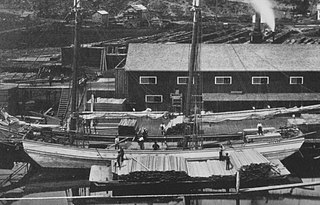
The Mayflower was a wooden hulled scow-schooner that sank on June 2, 1891, in Lake Superior near Duluth, Minnesota, United States, after capsizing with a load of sandstone blocks. In 2012 the shipwreck site was added to the National Register of Historic Places.
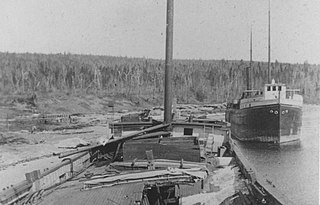
The AmboyandGeorge SpencerShipwreck Site is an archeological shipwreck site which consists of the wrecks of the wooden bulk freighter George Spencer and the wooden schooner-barge Amboy. Both vessels were wrecked during the Mataafa Storm of 1905. In 1994 the site was added to the National Register of Historic Places.

Thomas Friant was a wooden-hulled ferry that served on the Great Lakes from her construction in 1884 to her sinking in 1924. In January 1924, while gillnetting out of Two Harbors, Minnesota in Lake Superior, she was holed by ice, and sank with no fatalities. In 2004 her wreck was discovered in over 300 feet (91 m) of water in pristine condition. The wreck of Thomas Friant was listed on the National Register of Historic Places in 2019.

PS Lotta Bernard was a wooden-hulled sidewheel steam barge that served on the Great Lakes from her construction in 1869 to her sinking in 1874. She was built in Port Clinton, Ohio, in 1869 by Lewis M. Jackson for S.W. Dorsey of Sandusky, Ohio. When she entered service, she was chartered by the Northern Transportation Company to carry cordwood from the Portage River and Put-in-Bay to Cleveland, Ohio. In 1870, Lotta Bernard was sold to Luman H. Tenney of Duluth, Minnesota. During this time, she was contracted to haul building materials from Bark Bay, Wisconsin, to Duluth to be used in the construction of the first grain elevator in that port. Lotta Bernard was sold to John D. Howard of Superior, Wisconsin, in 1871.
